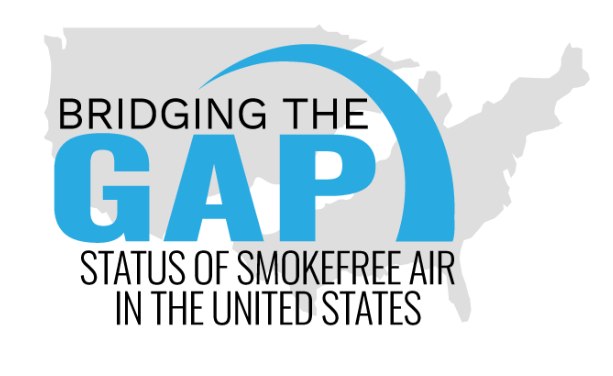Thousands of Indiana workers are exposed to secondhand smoke in casinos, bars, and membership clubs.
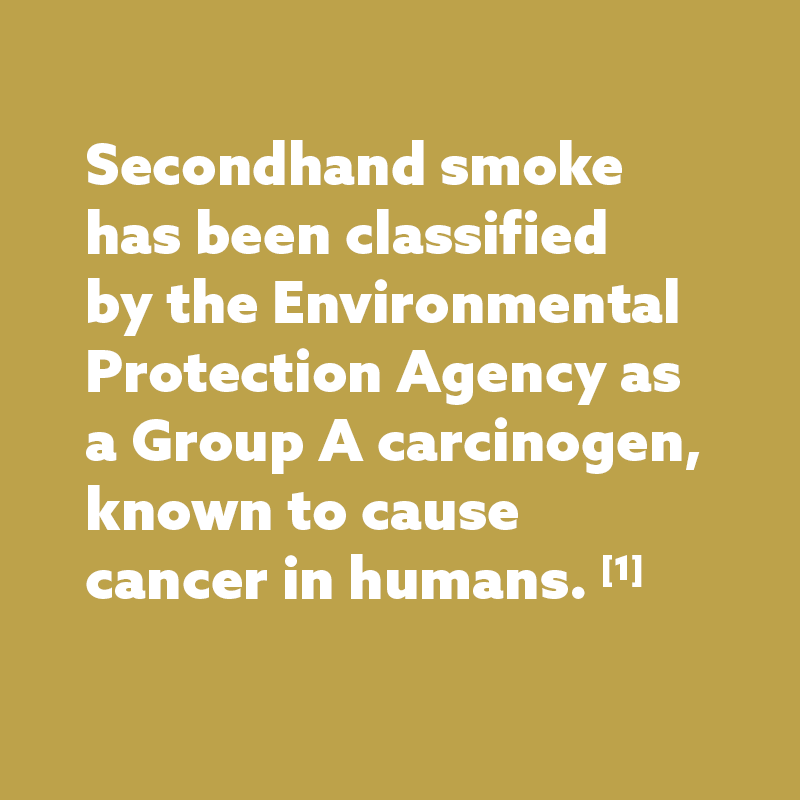
Indiana, the Hoosier state, is home to 6.7 million residents. In 2012, the state legislature passed a weak smokefree law, only applying to workplaces and restaurants. Only 31.5% of Indiana residents are protected by a 100% smokefree workplace, restaurant, and bar law; thousands of employees, patrons, and visitors are exposed to secondhand smoke in these venues. [2]
Indiana ranks 36th out of 50 states for overall health on the United Health Foundation’s “America’s Health Rankings Annual Report,” and 33rd for Nonsmoking Regulations.
- 62.3% of Americans enjoy comprehensive smokefree protections in all public places and workplaces, including restaurants and bars. In contrast, in Indiana only 31.5% of the population is protected by this type of smokefree law. [2]
- Only 22 communities have strong smokefree laws covering ALL workplaces, restaurants, and bars. [2]
- Nearly all of the 12,000 workers in Indiana’s commercial casinos remain exposed to secondhand smoke at work. [3]
- 1 in 5 Indiana adults are current smokers. [4]
- Smoking costs Indiana $2.9 billion in annual healthcare costs and an estimated $3.17 billion in lost productivity. [4]
- Focusing on local smokefree protections will protect public health and build momentum to strengthen the statewide law.
Preemption Status:
Not Preempted
State law does not preempt local governments from adopting smokefree air laws. Preemption refers to situations in which a law passed by a higher level of government takes precedence over a law passed by a lower one. In such cases, preemptive state laws set a ceiling, rather than a floor, and do not allow local authorities to enact strong local laws.

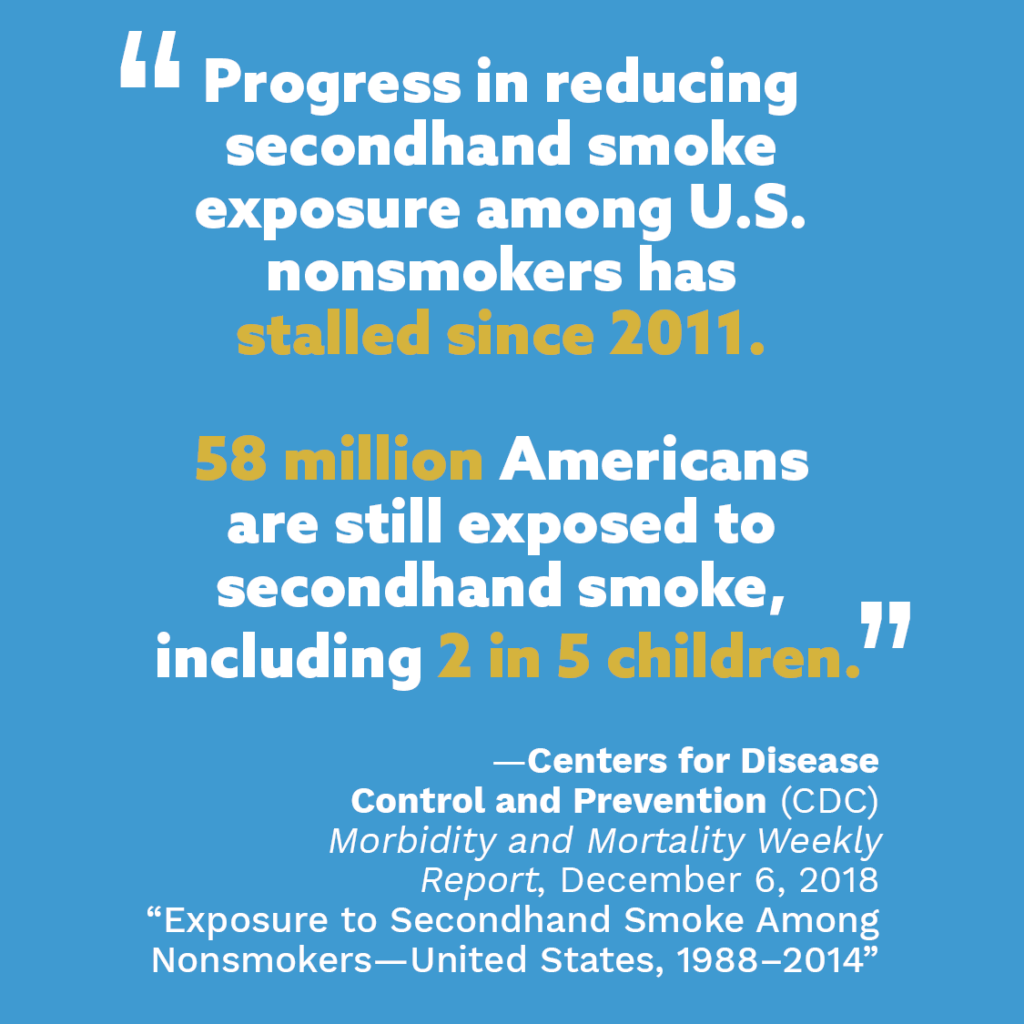
Current Landscape of Smokefree Protections
100% Smokefree Workplace, Restaurant, and Bar Laws, as of December 2022 [2]
Click on any star for city name.
To see additional smokefree laws, visit our list.
Indiana is well positioned to close the gaps in smokefree protections, and already includes 22 localities that have adopted a smokefree workplace, restaurant, and bar law. Unfortunately, thousands of workers and patrons remain exposed to secondhand smoke, particularly in the state’s thirteen casinos. The Hoosier State has only to look to its neighboring states of Ohio and Illinois to know that more can be done; these states also have major gaming competition markets and are completely smokefree. 100% smokefree casinos are being normalized post pandemic. The French Lick Resort and Casino is voluntarily smokefree indoors as well as the Four Winds Tribal casino property in South Bend. In 2022, a new smokefree casino will be constructed in Terre Haute.
Efforts to move strong, local smokefree policy change, add electronic cigarettes (e-cigarettes) to local smokefree laws, implement smokefree parks policies, as well as coordinated efforts to expand access to smokefree multi-unit housing are supported by statewide tobacco control funding and coordinated by a network of national, state, and local partners.
A total of 41 Indiana communities have 100% smokefree workplaces, restaurant and/or bar laws in effect. Of those, 22 cover all three provisions.
Bar and Casino staff are Exposed to Secondhand Smoke
Who is Left Behind?

Bar and Casino staff are Exposed to Secondhand Smoke
Thousands of workers continue to be left behind, particularly in the state’s 13 state-regulated casinos employing more than 12,000 employees in the following communities: East Chicago, Elizabeth, Evansville, Florence, Gary, Hammond, Lawrenceburg, Michigan City, Rising Sun, Indianapolis, and Shelbyville. In January 2018, the Pokagon band of Potawatomi opened the first tribal casino in South Bend, Indiana. Although all other workplaces, restaurants, bars, and non-tribal gaming venues in South Bend are required to be smokefree by local ordinance, Pokagon’s Four Winds Casino allows smoking indoors. Local and statewide partners are starting to build relationships with tribal leadership to collaborate to ultimately bring protections from commercial tobacco use for everyone, including those workers and patrons at the tribal casino.
Those exposed to secondhand smoke in Indiana often feel invisible. They are more likely to work in the hospitality industry, identify as LGBTQ2, or be a member of an ethnic minority. In conjunction with that, smoking rates are observably higher among adults with less education, lower income, who are uninsured, and those living with a mental health condition. [5] Individuals in these groups are often marginalized in the political process. Building strong coalitions at the local level is a strategy employed in Indiana to engage these populations and address persisting disparities.
Poor Health Outcomes and High Costs
Tobacco use is the leading preventable cause of death in the United States. More than 480,000 people die from smoking or exposure to secondhand smoke each year. [6]
All Hoosiers are paying the cost of higher smoking rates and poor health outcomes. The smoking rate among adults is 19.4% and 11.2% for high school students, compared to national rates of 12.5% and 8%, respectively.
Tobacco exacts a high toll, with 11,100 Hoosiers dying each year of tobacco-related illness. [4] At current trends, 151,000 kids under the age of 18 in Indiana are projected to die prematurely from tobacco-related illness. [6]
Smoking costs Hoosiers about $2.93 billion annually in medical expenditures. Nearly $590 million of these expenditures are covered by Medicaid. [4]
Secondhand smoke exposure causes heart disease, stroke, and lung cancer among adults, as well as respiratory disease, ear infections, sudden infant death syndrome, more severe and frequent asthma attacks, and slowed lung growth in children. [6,7]
Beyond secondhand smoke exposure, nonsmokers exposed to thirdhand smoke in a casino are at an ever higher risk than those in a smoke-polluted home. [8] Further, hospitality workers and children are susceptible to thirdhand smoke exposure, as the particles cling to hair, clothing and cars. Young children are particularly vulnerable, because they can ingest tobacco residue by putting their hands in their mouths after touching contaminated surfaces. [9]
Smokefree laws help to reduce adult smoking prevalence and prevent youth and young adult smoking initiation. [6,7]

Those exposed to secondhand smoke are more likely to work in the hospitality industry, identify as LGBTQ2, and be a member of an ethnic minority.
Gaming in Indiana
There are at least 18 gaming establishments in Indiana, and only two are 100% smokefree. Casinos, race tracks and other gaming establishments are workplaces as well as public places and should also be smokefree. In response to the 2020 COVID-19 pandemic, several Indiana casinos implemented 100% smokefree indoor air policies as part of their reopening plans: French Lick Casino, Tropicana Evansville, and Four Winds Casino (smokefree via Pokagon band of Potawatomi sovereign policy). The developers of the Hard Rock Casino in Terre Haute announced plans for the new casino to open as smokefree in compliance with the city’s already existing smokefree law. As of February 2021, the City of Shelbyville is considering a smokefree ordinance that would extend smokefree protections to Indiana Grand, one the state’s largest casinos. See the ANR Foundation Smokefree Casinos and Gaming Property Directory for Indiana.

First of its kind study demonstrates that casino visitors, even current smokers, desire smokefree spaces.
“When smoking is allowed in indoor areas of casinos, millions of nonsmoking casino visitors and hundreds of thousands of employees can be involuntarily exposed to secondhand smoke and related toxicants.” [10]
—Office on Smoking and Health, Centers for Disease Control and Prevention
A recent study found that 75% of U.S. adults who visit casinos favor smokefree casinos.
No prior studies have exclusively assessed adult attitudes toward smokefree casinos in the United States.
This study found very high favorability among those age >64 (81.6 %), college educated (81.7%), and higher income (79.1/80.8%). Smokers made up 13% of the sample, and, of those smokers, nearly half (45%) supported smokefree casinos. [10]
COVID Reminds Us That Health Promotion Policies Matter
Smoking and vaping, along with exposure to secondhand smoke and aerosols, negatively impact the respiratory system and may cause a person’s immune system to not function properly, known as being immunocompromised. Research demonstrates that current and former smokers of any age are at higher risk of severe illness from coronavirus disease (COVID) in part due to compromised immune and/or respiratory systems. Smoking leads to cardiovascular disease, as well as respiratory illnesses including bronchitis, asthma, Chronic Obstructive Pulmonary Disease (COPD), and lung cancer as a result of exposure to particulate matter, toxins, and carcinogens into their lungs. Secondhand tobacco and marijuana smoke and aerosol contain many of the same toxins, carcinogens, and particulate matter that lead to respiratory and cardiovascular diseases.
Removing masks to smoke or vape indoors undermines the proven benefit of face coverings and increases the risk of transmitting or inhaling COVID via infectious respiratory droplets, uncovered coughs, and increased touching of faces. Preventing exposure to secondhand smoke and e-cigarette aerosol or vape by adopting a smokefree policy with no smoking or vaping indoors and moving smoking or vaping to socially distanced outdoor areas away from entrances, could help mitigate worker and public exposure to carcinogens and toxins, as well as COVID.
Just as social distancing and handwashing help prevent the spread of disease, eliminating secondhand smoke is critical to prevent acute and chronic diseases, and saves lives by reducing the risk of heart disease, stroke, respiratory diseases, and lung cancer by up to 30% at a population wide level.
Going smokefree prevents exposure to the carcinogens and toxins in secondhand tobacco and marijuana smoke as well as dramatically reduces the spread of respiratory droplets that could transmit flu and other viruses like COVID.
Strategies to Close Gaps & Increase Health Equity
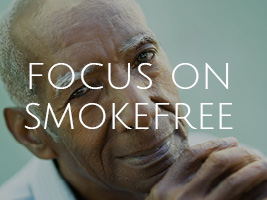
Focus on smokefree policies: Competing issues can distract and delay work on smokefree policies. Smokefree laws have immediate and long-term health and economic benefits: they are worth the investment of time and effort to protect everyone from exposure to a known human carcinogen. Strengthening the statewide smokefree law will require highly organized, concentrated efforts to build decision maker support and create a sense of urgency to act to make all workplaces smokefree.

Let local lead the way: Since Indiana municipalities have the authority to adopt local laws, communities should focus on local laws covering all workplaces, including bars and gambling facilities. Local control and increasing civic engagement is at the heart of our broader goal of educating the public about the health effects caused by secondhand smoke and changing attitudes regarding smoking in ways that harm other people. Smokefree laws should also prohibit the use of e-cigarettes, marijuana, and hookah to prevent secondhand smoke exposure to the toxins, carcinogens, fine particles, and volatile organic compounds that have been found to compromise respiratory and cardiovascular health. [11,12]

Continue efforts on smokefree casinos: Significant coordinated efforts to require smokefree gaming have fallen short in communities like Evansville and Gary. Continuing to bring together advocates working in communities with casinos will help to create a sense of inevitability that Indiana casinos should and will become smokefree. Local action that follows the successful examples of New Orleans and Baton Rouge can protect workers now rather than wait for a statewide effort while workers and patrons continue to be exposed and sickened by breathing toxic air at work.

Strengthen power of partnerships: Many local coalitions are supported by resources provided by the Indiana State Health Department Division of Tobacco Prevention and Cessation. This program is not funded at CDC recommended levels but does provide extensive educational outreach, evaluation, research, and training to professionalize smokefree efforts. Emphasizing the importance of smokefree policy change to partnerships built with organizations and affiliates across the state will continue to build power for strengthening the statewide smokefree law.
Sources of Data:
- “U.S. Environmental Protection Agency, Respiratory Health Effects of Passive Smoking: Lung Cancer and Other Disorders,” EPA/600/6-90/006F, December 1992.
- American Nonsmokers’ Rights Foundation. U.S. Tobacco Control Laws Database. Berkeley, CA, 2022.
- American Gaming Association. (September 2018). State of the States: The AGA Survey of the Casino Industry.
- Centers for Disease Control and Prevention. (n.d.). State Highlights: Indiana [from State Tobacco Activities Tracking and Evaluation System].
- Indiana State Department of Health, Tobacco Prevention and Cessation. Indiana’s Tobacco Burden.
- US Department of Health and Human Services. The health consequences of smoking: 50 years of progress. A report of the Surgeon General. Atlanta, GA: US Department of Health and Human Services, CDC; 2014.
- US Department of Health and Human Services. Preventing tobacco use among youth and young adults. A report of the Surgeon General. Atlanta, GA: US Department of Health and Human Services, CDC; 2012.
- Matt, Dr. Georg (2018). Smoking Bans May Not Rid Casinos of Smoke. US News and World Report.
- Matt, G E, Quintana PJ E, Hovell MF et. al. (2004). Households contaminated by environmental tobacco smoke: sources of infant exposures. British Medical Journal: Tobacco Control.
- Michael A. Tynan, BA1 ; Teresa W. Wang, PhD1; Kristy L. Marynak, MPP1; Pamela Lemos, MS1; and Stephen D. Babb, MPH1, Attitudes Toward Smoke-Free Casino Policies Among US Adults, Centers for Disease Control and Prevention Office on Smoking and Health, Public Health Reports, 2017 [accessed 2019 Mar 21].
- Grana, R; Benowitz, N; Glantz, S. “Background Paper on E-cigarettes,” Center for Tobacco Control Research and Education, University of California, San Francisco and WHO Collaborating Center on Tobacco Control. December 2013.
- Williams, M.; Villarreal, A.; Bozhilov, K.; Lin, S.; Talbot, P., “Metal and silicate particles including nanoparticles are present in electronic cigarette cartomizer fluid and aerosol,” PLoS ONE 8(3): e57987, March 20, 2013.
Related Reading:
Huang, J., King, B.A., Babb, S.D., Xu, X., Hallett, C., Hopkins, M. (2015). Sociodemographic disparities in local smoke-free law coverage in 10 states. American Journal of Public Health, 105(9), 1806–1813.
Tynan, M.A., Baker Holmes, C., Promoff, G., Hallett, C., Hopkins, M., & Frick, B. (2016). State and local comprehensive smoke-free laws for worksites, restaurants, and bars — United States, 2015. Morbidity and Mortality Weekly Report, 65(24), 623-626.
United Health Foundation. (2018). America’s Health Rankings Annual Report
The Economic Impact of Tribal Gaming, December 2017
[n.a.], “Tobacco industry interference with tobacco control,” Geneva: World Health Organization (WHO), 2008.
NCI Monograph 17: Evaluating ASSIST – A Blueprint for Understanding State-level Tobacco Control Evaluation of American Stop Smoking Intervention Study for Cancer Prevention Chapter 8, Evaluating Tobacco Industry Tactics as a Counterforce to ASSIST (October 2006).
July 2022
